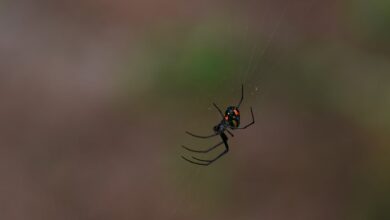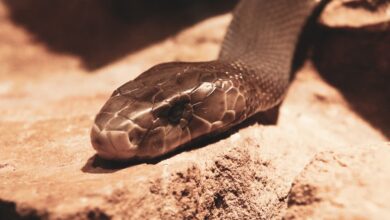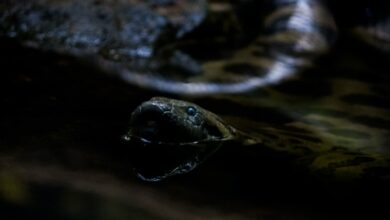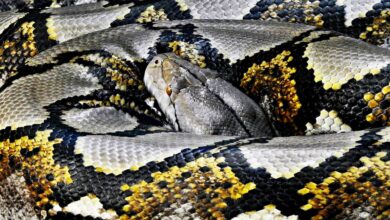Scientists Discover 512-Year-Old Shark
Scientists Discover 512-Year-Old Shark, Which Would Be The Oldest Living Vertebrate On The Planet
The Greenland shark is one of nature’s creations that is the least graceful. They are clumsy, with stunted pectoral fins that they employ for swimming ponderously slowly in the cold and dark Arctic seas.
Moreover, they have blunt snouts and gaping mouths, which give them the appearance of being unlucky and lacking in intelligence. Several sharks are affected with parasites that look like worms and hang disgustingly from their eyes.
They are members of the family Squalidae, which is rather fitting, and they appear to be just as ready to feed themselves on fresh halibut as they are on rotting polar bear corpses. 
They have once sought after for the oil in their livers, but now they are regarded to be bycatch. A marine researcher recently shared with me that catching a Greenland shark in a fishing net is about as pleasant for some fishermen as walking in dog excrement.
Initial Effort By 3 Danish Scientists
The efforts of three Danish scientists—a physicist by the name of Jan Heinemeier, a marine biologist by the name of John Fleng Steffensen, and Julius Nielsen—helped solve the riddle, which otherwise may have persisted for much longer.
A group of proteins known as lens crystallines can be found in the human eye, and they were the subject of a study that Heinemeier and four of his other colleagues wrote and published nine years ago. Crystalline structures, similar to those of all organic compounds, are composed of carbon, including minute quantities of the radioactive isotope carbon-14.
Crystallines, on the other hand, are stable throughout a person’s life, in contrast to other proteins, which are constantly recycled and replenished. Crystallines are like envelopes that are sealed after birth, and the contents of those envelopes are artifacts from the womb. And if crystals are like envelopes, then carbon-14 is like the postmark on the envelope.
On Earth, the isotope has always been present naturally; it is created whenever incoming cosmic rays collide with the atmosphere. Nevertheless, a portion of the isotope that is now available originates from the testing of nuclear weapons.
The level varies from year to year, which indicates that each specific historical period has its own unique carbon-14 signature. During the nuclear test-launching frenzy of the 1950s and 1960s, there was a particularly significant increase, sometimes known as the bomb pulse.
Heinemeier discovered, through his experiments on cadaver lenses, that he could calculate the date of birth of the deceased by measuring the amount of carbon-14 that the lenses contained and using this information.
Lens Approach to Uncover the Mystery of A Boy
The Greenland shark was not mentioned at all in Heinemeier’s research article. But, he and his co-authors did mention the possibility that their lens approach may be valuable in the realm of forensics.
Heinemeier got a request from German law enforcement not too long after the report was released into the public domain. They required his assistance in solving a peculiar mystery. 
A teenager from the town of Wenden, located close to Cologne, had opened the freezer at his family’s home in quest of a snack when he came across the remains of three newborn girls that had been wrapped in plastic.
The mother of the kid was suspected by the investigators of having been responsible for the deaths of her children, although she denied doing so.
Although it was evident how old the victims were (they were all obviously infants), the authorities had no method of determining when the killings had taken place.
Heinemeir conducted an examination of the lenses of newborns and came up with estimations that were quite accurate. He discovered that two of them had been born in the latter half of the 1980s and that the third had been born between the years 2003 and 2007.
Even though one of the killings occurred after Germany’s two-decade statute of limitations on manslaughter, the remaining murders were still capable of being prosecuted. Once everything was said and done, the mother received a sentence of four years in jail.
Nielsen Used Heinemeier’s Method to Find Out Sharks’ Age
In 2009, Heinemeier got another request, this time from Steffensen, who had recently traveled to Greenland and encountered the longevity issue there. Heinemeier responded to Steffensen’s inquiry by conducting further research on the subject.
Steffensen questioned whether or not it was possible to utilize the sharks’ delicate vertebrae for carbon dating. Heinemeier informed Steffensen about the latest development in the murder investigation that he had made and proposed that Steffensen go back to Greenland and bring some lenses with him.
Nevertheless, there was a catch in the scenario. Although sharks definitely have crystallines in their eyes, procuring enough samples for in-depth research was a challenging and expensive endeavor; initially, Steffensen was only successful in obtaining two samples.
Young biology student Nielsen, who had been listening to one of Steffensen’s lectures, came up with a solution after hearing this information. After spending the summer in Greenland working on research vessels for the Greenland Institute of Natural Resources, he got the insight that the undesired bycatch from the trawlers was a biological treasure waiting to be discovered.
Nielsen obtained the eyeballs of twenty-eight Greenland sharks over the course of the following five years, during which he also earned a master’s degree and later a doctorate from the University of Copenhagen. He did this in collaboration with a group of research trawlers and local fishermen.
Female Sharks Aging Between 272 and 512 Years
In August of the year 2020, Nielsen and his coworkers published their findings. They discovered, by using Heinemeier’s approach, that the sharks that were around seven feet long were born after the bomb pulse, whereas the largest creatures were born much before it. This was the case with the tiniest sharks that they collected. 
They were able to arrive at this conclusion with the use of a mathematical model that correlated size with age. Using this model, they determined that a sixteen-foot-long female shark was at least 272 years old and maybe as much as 512 years old.
The figure was not accurate because it is challenging to determine the background carbon-14 levels in the water and because Nielsen and his colleagues did not know where the region of the ocean in which the sharks had been born.
Both of these factors contributed to the inaccuracy of the figure. Despite this, it proved beyond a shadow of a doubt that Greenland sharks are the longest-living animals on the planet. In principle, the largest ones may be close to 600 years old at the very least.
Survival of Sharks for Hundreds of Years
The question that follows is regarding the survival strategies of sharks.
In an effort to uncover the genetic and behavioral processes that bestow exceptional abilities upon distinct animal species, such as the cancer-resistant qualities of elephants and the regenerative capabilities of axolotls, scientists are dedicating more and more time and resources to exploring the natural world.
It is possible that there are Greenland sharks still alive today that were born before Christopher Columbus; it is believed that the species does not even achieve sexual maturity until somewhere between the ages of one hundred and fifty and two hundred years.
Why? The answer most likely lies in the fact that they have a relatively slow metabolism, along with the fact that they live in frigid waters.




